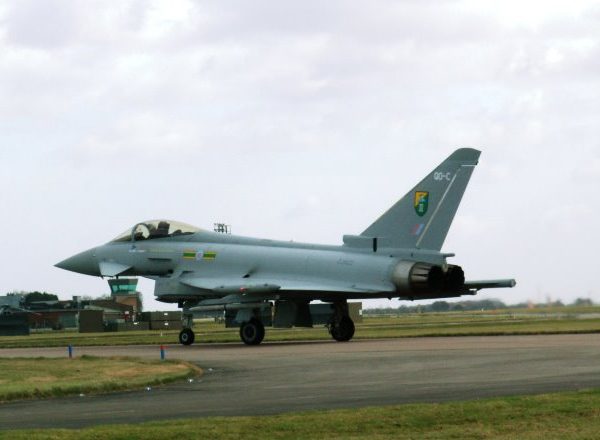The International Civil Aviation Organization (ICAO) has proposed new obstacle limitation surfaces (OLS) which are expected to be brought into force from November 2028. Following our March article, in which we explored in greater depth the Take-Off Climb Surface (TOCS), we now examine the new Approach Surface (APPS).
Figure 1: Boeing 747-400 on final approach. [1]
What is the Purpose of the Existing Approach Surface?
The current Approach Surface is designed to safeguard aircraft on final approach to a runway threshold by establishing an imaginary surface under an approach path above which new developments are not (typically) permitted. It is a sloped surface that originates at a specified distance before the runway threshold before sloping upwards and outwards at a specified gradient and splay, along the extended runway centreline, in the direction opposite to that in which the aircraft would be landing.
There can be areas in the vicinity of an aerodrome in which the APPS is more restrictive than any other surface present, including the TOCS, which safeguards take-off operations. This largely depends on the declared distances of the runway and therefore where the surfaces which define the TOCS and APPS commence with respect to each other.
Along with the existing TOCS, the APPS is among the most tightly enforced OLS in the UK, with guidance in UK Aerodromes Regulation 139 [2] stating that:
“New objects or extensions of existing objects should not be permitted above an approach surface within 3 000 m of the inner edge or above a transitional surface except when the new object or extension would be shielded by an existing immovable object.”
When an object is more than 3,000 metres from the runway threshold, the rules are slightly more lenient, and more discretion is allowed as there is now a possible exception where:
“After a safety assessment, it is determined that the object would not adversely affect the safety or significantly affect the regularity of operations of aeroplanes.”
From an enforcement standpoint, the APPS is therefore effectively split in two, with more stringent rules within 3,000 metres of the runway threshold.
Figure 2: The new approach surface, along with the new transitional surface. The rectangle at the bottom is the runway strip. Note that this surface may vary for offset or curved approaches. [3]
The New APPS – A New Approach?
The new OLS will have, as one of its obstacle free surfaces (OFS), an Approach Surface. Like the existing APPS, it safeguards aircraft approaches and for the large aircraft at least, is slightly steeper than the new TOCS. As an OFS, the enforcement of the APPS will be similar to that of the first 3,000 metres of the existing surface. Indeed, the ICAO state letter [3] of 30 May 2023 sets out that:
“The obstacle free surfaces (OFS) will provide a volume of airspace necessary for safe and accessible operations near the runway and in the vicinity of the aerodrome. As such, the volume of airspace is kept free from obstacles, except for existing obstacles and/or terrain which would have been assessed earlier.”
This brings us conveniently onto the main difference between the new and existing APPS. The key difference is that while the existing surface can extend to as much as 15km from the runway threshold, the new surface will only extend 4,500m beyond the threshold. In this way, the new surface is shorter than the existing surface, but the more restrictive enforcement applies to the whole surface and to a longer length (up to 4,500m), when compared to the existing figure (up to 3,000m). The new surface is steeper than the previous one for larger aircraft (3.33% against 2.5% gradient [2,4]) and narrower than the existing surface (200m starting width against 280m starting width). This is consistent with the data driven approach which has been taken to create a set of new surfaces which maximise the amount of development allowed while maintaining the safety of aircraft operations.
In a similar vein to the new TOCS, the APPS is modified to follow the flight procedures it is safeguarding more closely. As is laid out in 4.2.1.3 of [3], stating that the APPS:
“Shall be varied when lateral offset, angular offset or curved approaches are utilized; two sides originating at the ends of the inner edge and diverging uniformly at a specified rate from the extended centre line of the lateral offset, angular offset or curved ground track.”
This means that the new Approach Surface can be curved or at an angle offset from the extended runway centreline. This is in keeping with the aims of establishing the new surfaces, which include ensuring greater consistency between the new OLS and existing instrument flight procedures. It should be noted that in theory this is already listed as being possible [2] for the existing APPS but not the existing TOCS. Having said this, the need to create the new OLS surfaces might provide an impetus for aerodromes to incorporate these modifications for the first time if they have not yet done so.
More on the new ICAO OLS surfaces can be found here.
The previous article in the series about the new TOCS can be found here.
More on Pager Power’s new ICAO OLS Modelling can be found here.
About Pager Power
Pager Power undertakes technical assessments for developers of renewable energy projects and tall buildings worldwide. For more information about what we do, please get in touch.
References
[1] Writpit, Runway lights and aircraft approaching for touchdown, https://commons.wikimedia.org/wiki/File:Aircraft_approaching_runway.jpg
[2] CAA, Aerodromes, UK Regulation (EU) 139/2014
[3] ICAO State Letter (Reference AN 4/1.1.58-23/33)
[4] ICAO, Annex 14 to the Convention on International Civil Aviation, Ninth Edition, July 2022 Volume I





